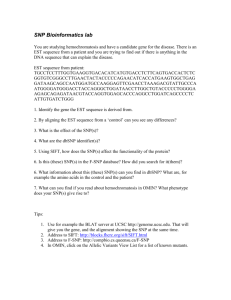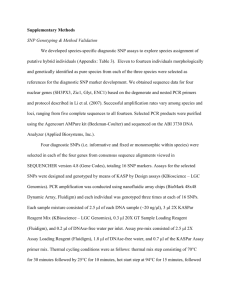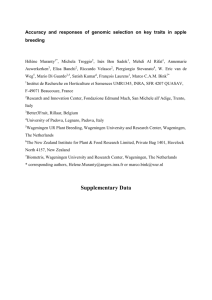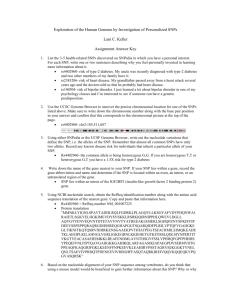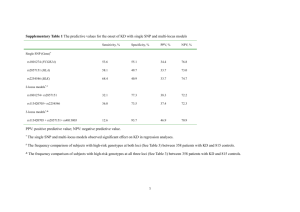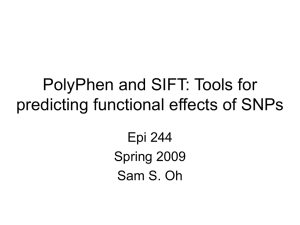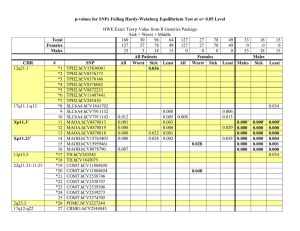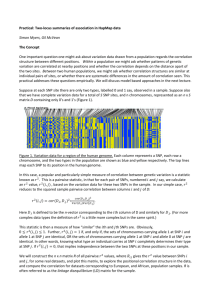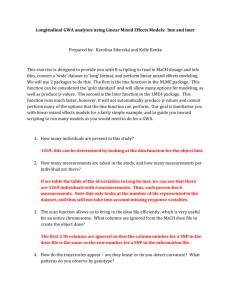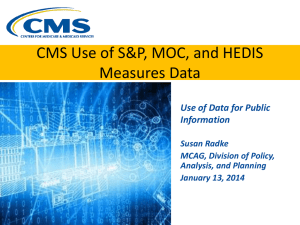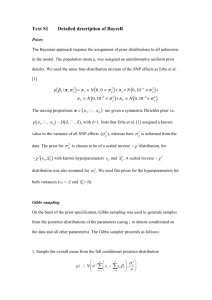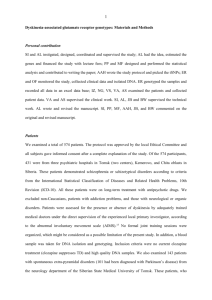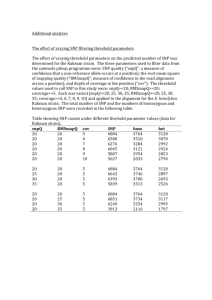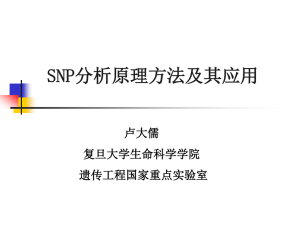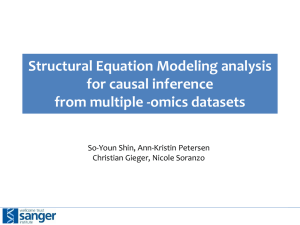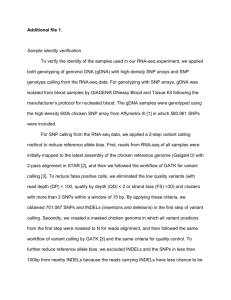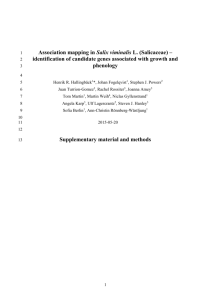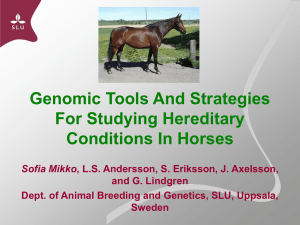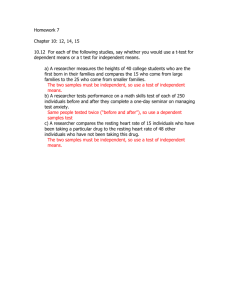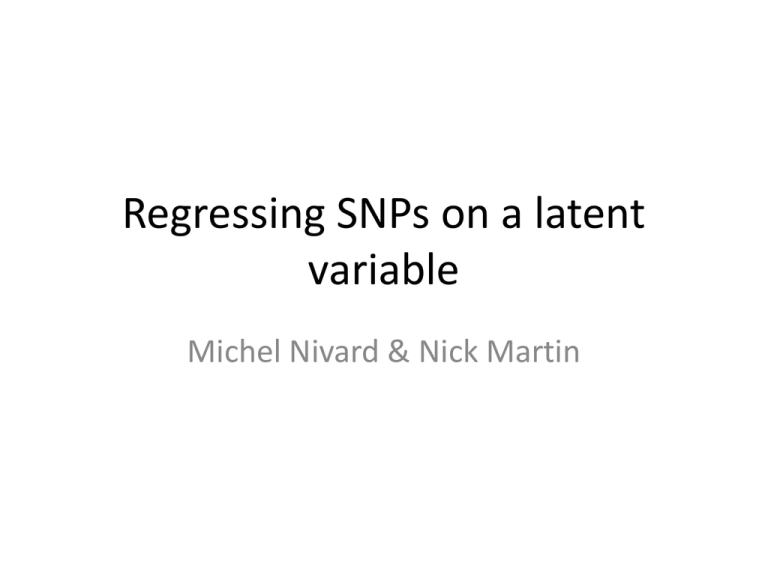
Regressing SNPs on a latent
variable
Michel Nivard & Nick Martin
-Genotyping was done in twin pairs (related)
-Phenotypes : ratings by both parents (bivariate)
-Parental ratings at ages 3, 7, 10, 12 (longitudinal)
-Not all children reached at 12 yet (missing data)
Genotyping in 4 candidate genes:
*mono-aminergic system:
-serotonin receptors (HTR) 2A (HTR2A)
rs6314
-catechol-O-methyltransferase (COMT)
rs4680
-tryptophane hydroxylase type 2 (TPH2)
rs1007023
rs12231356
*neurogenesis:
-brain derived neurotrophic factor (BDNF)
rs6265
Factorial association model for longitudinal
Attention Problems in children
Circle = latent (not observed) individual score; square / triangle= observed score;
arrow = regression; double headed arrow = correlation
The factor model
Use multivariate approaches to model all phenotypic data
(all time points / all raters / all indicators) and do not force
multivariate data into a single sum score.
Advantage:
increase in power (though not always!)
Explicitly model relatedness between subjects
Disadvantage: no standard GWAS software
But why and when should we go for the single
factor model and not another model?
Use a single factor model if you believe, or have good reasons
to believe, the SNP or gene influences most or all the indicators
which load on the factor.
DO NOT Use a single factor model if you believe, or have good
reasons to believe, the SNP or gene influences one or only a small
number of the indicators load on the factor
Increase in statistical power
Ferreira MA, Purcell SM. A multivariate test of association.
Bioinformatics. 2009, 1;25(1):132-3 (intercorrelations among phenotypes equal)
Medland SE, Neale MC. An integrated phenomic approach to multivariate allelic
association. Eur J Hum Genet. 2010 18(2):233-9 (factor models)
van der Sluis S, Verhage M, Posthuma D, Dolan CV. Phenotypic complexity,
measurement bias, and poor phenotypic resolution contribute to the missing
heritability problem in genetic association studies. PLoS One. 2010
;5(11):e13929 (measurement invariance)
Minica CC, Boomsma DI, van der Sluis S, Dolan CV. Genetic association in
multivariate phenotypic data: power in five models. Twin Res Hum Genet. 2010,
13(6):525-43 (also includes longitudinal simplex models)
Implementation in OpenMx
Factor loadings and correlations among latent
phenotypes were obtained from running the
model in a larger dataset of > 32,000 twins from
16,169 families, who participated at least once:
2,436 MZM, 2,856 DZM,
2,742 MZF, 2,556 DZF, 5,602 (DOS) twin pairs
Age
Rater
Factor Loading
Factor loading rMZ
Residual
(residual)
rDZ
(residual)
3
Mother
1.2337
1.7753
0.6465
0.1539
Father
1.2310
1.7186
0.6334
0.1807
Mother
2.3359
1.8036
0.5994
0.3254
Father
2.0936
1.7091
0.6365
0.3872
Mother
2.5046
1.7403
0.5652
0.3108
Father
2.2797
1.6928
0.6110
0.3767
Mother
2.3230
1.7810
0.6231
0.3063
Father
2.1039
1.7563
0.6472
0.4104
7
10
12
Factorial association model : 16 phenotypes
(2 twins, 2 raters, 4 time points)
SNP is
0,1, 2
β
λ
Parameters to be estimated: effect of SNP, effect of sex /age /rater, grand mean,
twin correlations (for MZ and DZ twins)
Exercise
1 Fit the Factorial association model for 1 SNP
per run (consider one of the 5 SNPs).
2 Fit the Factorial association model for all 5
SNPs simultaneously.
Fit the model for 1 SNP
•
•
•
•
•
Rs6265 (BDNF)
Rs4680 (COMT) (Michel)
Rs6314 (HTR2A)
rs1007023 (TPH2)
Rs12231356 (TPH2)
Fit the model for 1 SNP
Fit the model for 1 SNP
Results
Rs6265 (BDNF)
Rs4680 (COMT)
Rs6314 (HTR2A)
rs1007023 (TPH2)
Rs12231356 (TPH2)


